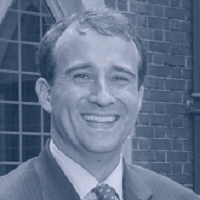Treason is a unique offense in our constitutional order—the only crime expressly defined by the Constitution, and applying only to Americans who have betrayed the allegiance they are presumed to owe the United States. While the Constitution’s Framers shared the centuries-old view that all citizens owed a duty of loyalty to their home nation, they included the Treason Clause not so much to underscore the seriousness of such a betrayal, but to guard against the historic use of treason prosecutions by repressive governments to silence otherwise legitimate political opposition. Debate surrounding the Clause at the Constitutional Convention thus focused on ways to narrowly define the offense, and to protect against false or flimsy prosecutions.
The Constitution specifically identifies what constitutes treason against the United States and, importantly, limits the offense of treason to only two types of conduct: (1) “levying war” against the United States; or (2) “adhering to [the] enemies [of the United States], giving them aid and comfort.” Although there have not been many treason prosecutions in American history—indeed, only one person has been indicted for treason since 1954—the Supreme Court has had occasion to further define what each type of treason entails.
The offense of “levying war” against the United States was interpreted narrowly in Ex parte Bollman & Swarthout (1807), a case stemming from the infamous alleged plot led by former Vice President Aaron Burr to overthrow the American government in New Orleans. The Supreme Court dismissed charges of treason that had been brought against two of Burr’s associates—Bollman and Swarthout—on the grounds that their alleged conduct did not constitute levying war against the United States within the meaning of the Treason Clause. It was not enough, Chief Justice John Marshall’s opinion emphasized, merely to conspire “to subvert by force the government of our country” by recruiting troops, procuring maps, and drawing up plans. Conspiring to levy war was distinct from actually levying war. Rather, a person could be convicted of treason for levying war only if there was an “actual assemblage of men for the purpose of executing a treasonable design.” In so holding, the Court sharply confined the scope of the offense of treason by levying war against the United States.
The Court construed the other treason offense authorized by the Constitution similarly narrowly in Cramer v. United States (1945). That case involved another infamous incident in American history: the Nazi Saboteur Affair. Cramer was prosecuted for treason for allegedly helping German soldiers who had surreptitiously infiltrated American soil during World War II. In reviewing Cramer’s treason conviction, the Court explained that a person could be convicted of treason only if he or she adhered to an enemy and gave that enemy “aid and comfort.” As the Court explained: “A citizen intellectually or emotionally may favor the enemy and harbor sympathies or convictions disloyal to this country’s policy or interest, but, so long as he commits no act of aid and comfort to the enemy, there is no treason. On the other hand, a citizen may take actions which do aid and comfort the enemy—making a speech critical of the government or opposing its measures, profiteering, striking in defense plants or essential work, and the hundred other things which impair our cohesion and diminish our strength—but if there is no adherence to the enemy in this, if there is no intent to betray, there is no treason.” In other words, the Constitution requires both concrete action and an intent to betray the nation before a citizen can be convicted of treason; expressing traitorous thoughts or intentions alone does not suffice.
To further guard against the prospect that the government could use false or passion-driven accusations of treason to undermine political opponents, the Treason Clause provides that the offense may only be proven by “open confession in court,” or on “the testimony of two witnesses to the same overt act.” The “overt act” requirement was designed both to limit the kind of substantive behavior treason could punish—only conduct, not mere expression—and to ensure that the conduct itself demonstrated a defendant’s intention to betray the United States. Believing that no witness could meaningfully testify to a defendant’s internal state of mind, the Cramer Court made clear that the defendant’s disloyal intent must be evident from the witnessed acts themselves; the government would have to prove that each overt act alleged “actually gave aid and comfort to the enemy.” The two-witness requirement was likewise geared to raising the bar to prosecution, applying “at least to all acts of the defendant which are used to draw incriminating inferences that aid and comfort have been given.” While there was no dispute in Cramer’s case that he had met with a man who turned out to be a German soldier in the United States, the Court concluded that these facts alone failed to establish Cramer had actually given that enemy soldier aid and comfort. The Court accordingly reversed Cramer’s treason conviction.
The Constitution also narrowed the scope of punishment for treason as compared to English common law. The final clause of this Section establishes that, while Congress has the general power to establish the penalties for committing treason, Congress may not “work corruption of blood, or forfeiture except during the life of the person” convicted of treason. “Corruption of blood” is a reference to English common law, which prohibited family members from—among other things—receiving or inheriting property from a person convicted of treason. Under the Constitution, that punishment may not extend beyond the life of the person convicted of treason.






